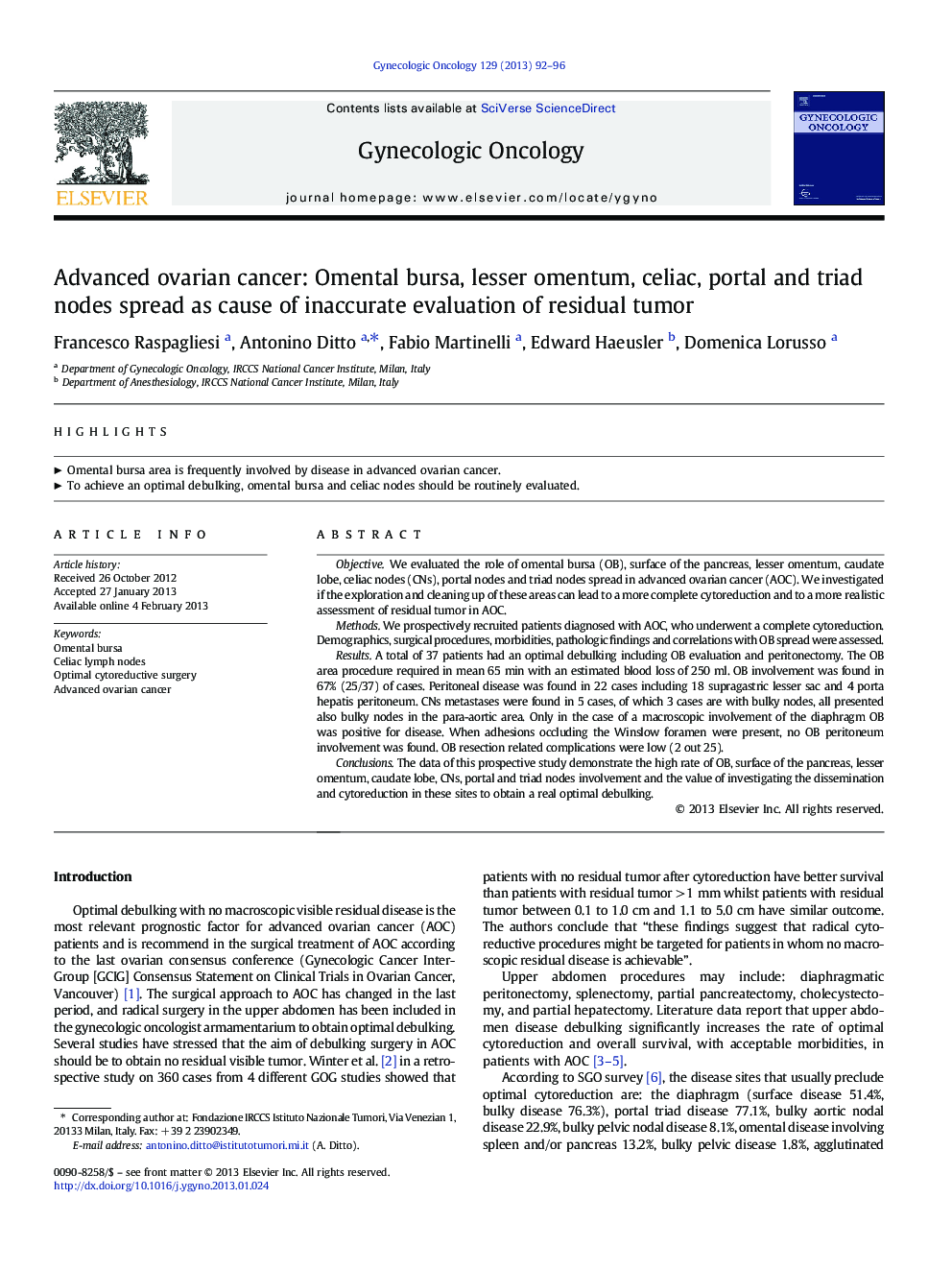| Article ID | Journal | Published Year | Pages | File Type |
|---|---|---|---|---|
| 6183800 | Gynecologic Oncology | 2013 | 5 Pages |
ObjectiveWe evaluated the role of omental bursa (OB), surface of the pancreas, lesser omentum, caudate lobe, celiac nodes (CNs), portal nodes and triad nodes spread in advanced ovarian cancer (AOC). We investigated if the exploration and cleaning up of these areas can lead to a more complete cytoreduction and to a more realistic assessment of residual tumor in AOC.MethodsWe prospectively recruited patients diagnosed with AOC, who underwent a complete cytoreduction. Demographics, surgical procedures, morbidities, pathologic findings and correlations with OB spread were assessed.ResultsA total of 37 patients had an optimal debulking including OB evaluation and peritonectomy. The OB area procedure required in mean 65Â min with an estimated blood loss of 250Â ml. OB involvement was found in 67% (25/37) of cases. Peritoneal disease was found in 22 cases including 18 supragastric lesser sac and 4 porta hepatis peritoneum. CNs metastases were found in 5 cases, of which 3 cases are with bulky nodes, all presented also bulky nodes in the para-aortic area. Only in the case of a macroscopic involvement of the diaphragm OB was positive for disease. When adhesions occluding the Winslow foramen were present, no OB peritoneum involvement was found. OB resection related complications were low (2 out 25).ConclusionsThe data of this prospective study demonstrate the high rate of OB, surface of the pancreas, lesser omentum, caudate lobe, CNs, portal and triad nodes involvement and the value of investigating the dissemination and cytoreduction in these sites to obtain a real optimal debulking.
⺠Omental bursa area is frequently involved by disease in advanced ovarian cancer. ⺠To achieve an optimal debulking, omental bursa and celiac nodes should be routinely evaluated.
